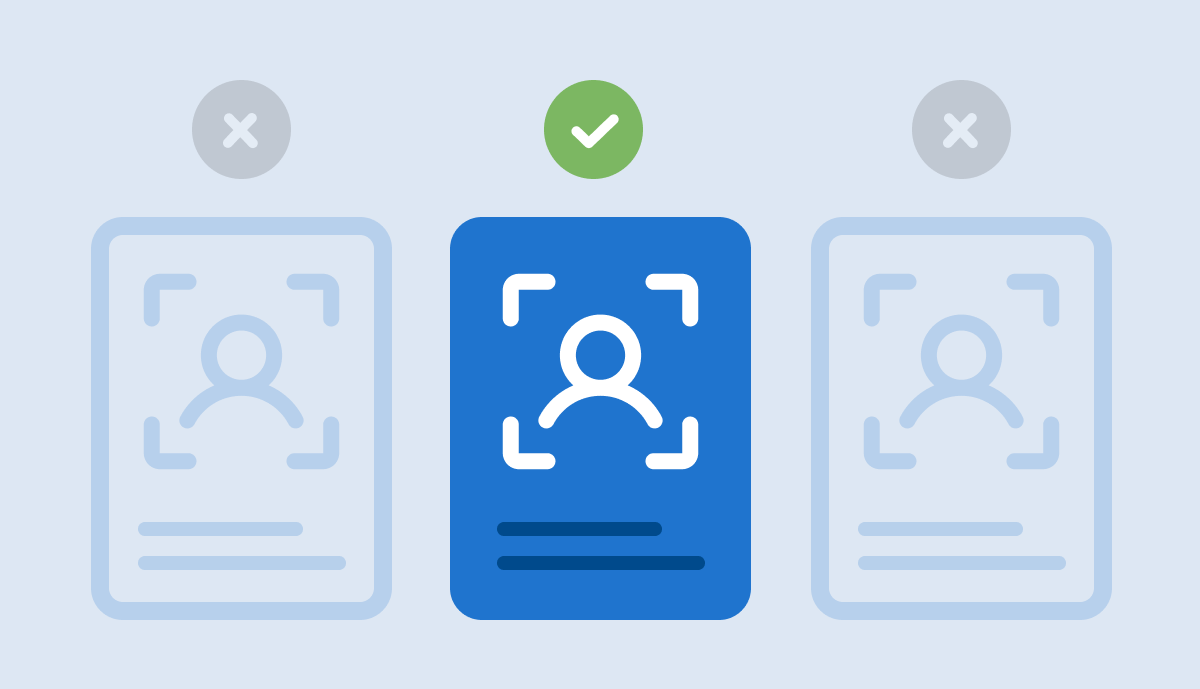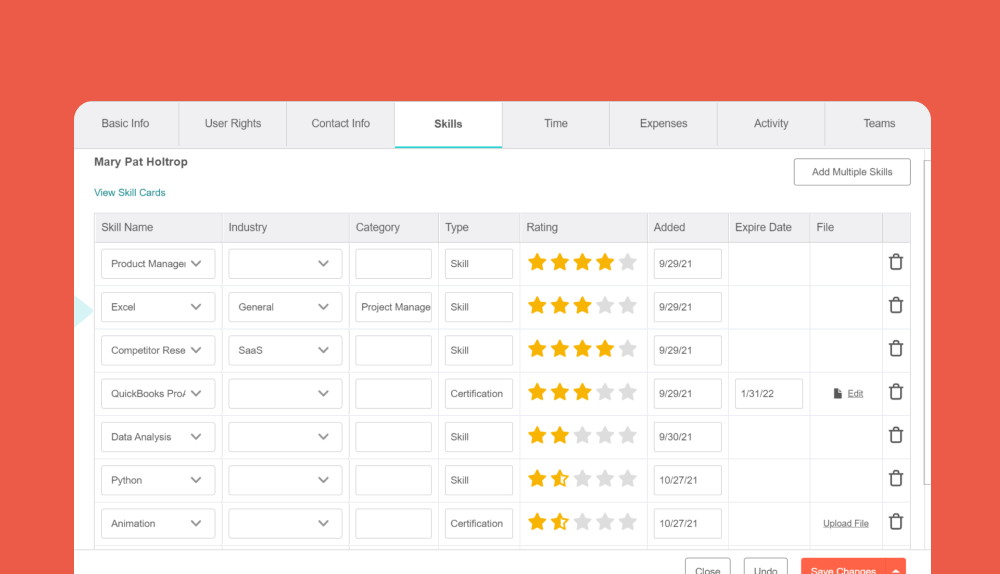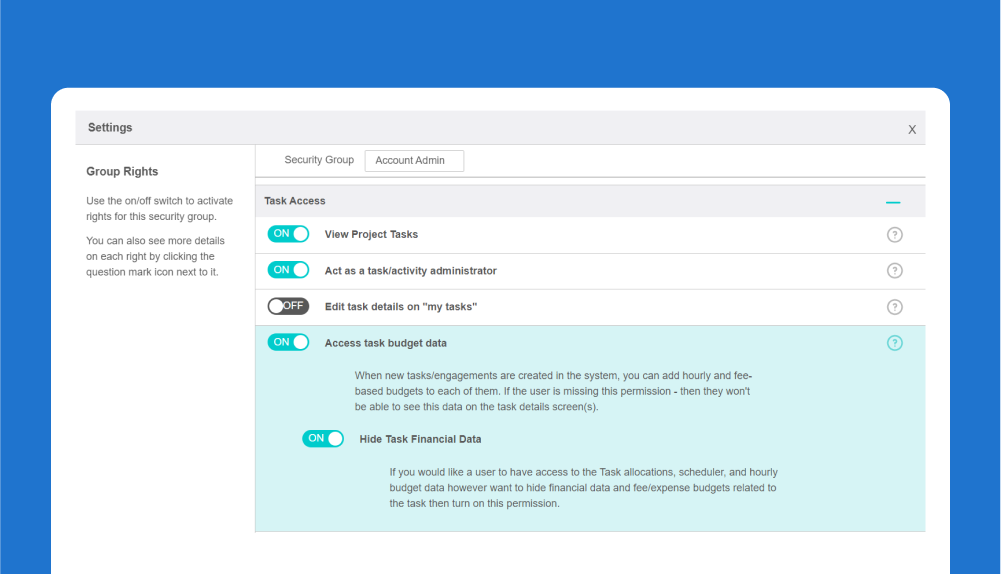For project managers, resource planning is a base of any successful delivery. But how to master the resource management to optimize the costs and maximize the profits, all while keeping your team members happy? We have an answer to that question!
What Is Resource Planning? Definition
Resource planning is the strategic process of forecasting, allocating, and managing personnel, time, and financial resources to optimize efficiency, profitability, and service delivery for future projects.
In professional services firms, it involves aligning the right talent with project demands, balancing workloads to prevent underutilization or burnout, and proactively adjusting resources to meet evolving client and business needs.
Why Is Resource Planning Crucial For Project Management?
But what are the benefits of resource planning – why should companies be interested in the process?
As it directly impacts efficiency, profitability, and client satisfaction, resource planning is an apple of the eye of all resource managers and executives. In professional services companies, the process is particularly important, as it allows organizations to:
- Optimize resource utilization and make the most of project resources. When resource allocation is done right, it ensures the right people with the right skills are assigned to the right projects, minimizing underutilization and preventing burnout.
- Improves project delivery and, as a result, customer satisfaction. Right team members mean a perfect project, and a perfect project means happy customer. The key to all that? Managing resource capacity just right.
- Enhanced profitability. Resource planning maximizes utilization rates, reduces inefficiencies, and ensures that resources are allocated in a way that supports financial goals.
- Strategic decision making and mitigated risks. When supported by resource management software, resource planning provides insights into workforce capacity, skill gaps, and future hiring needs, allowing leaders to make data-driven decisions and mitigates risks even in complex project portfolio management.
Resource Planning Process Step by Step
The success of strategic resource planning for any number of team members starts with the right process. Still, with numerous resource requirements and dozens of upcoming projects, resource planning process is not always easy. Here’s how the best professional services companies approach managing their resource demand.
Step 1. Define Project Scope and Requirements
The foundation of resource allocation begins with a clear understanding of project scope and requirements. This involves outlining objectives, deliverables, and deadlines while identifying the necessary skill sets and expertise required for successful execution.
Without a well-defined scope, project managers can determine the skill set and experience levels of perfect team members, making resource allocation for human resources reactive rather than strategic, and leading to inefficiencies and misalignment between project demands and available talent.
Step 2. Assess Resource Availability and Capacity
Once project needs are established, the next step is to assess the availability and workload of your workforce. This includes reviewing current project commitments, team schedules, and any potential constraints such as vacation leaves or overlapping assignments.
An overview of resource availability in BigTime
For many project managers, checking resource utilization is the most important part of the resource planning. Why? A comprehensive and proactive evaluation of capacity prevents last-minute resource shortages, ensures balanced workload management and helps avoid burnout among high-performing employees, reducing the frictions in human resources.
Tip: Take a Closer Look at Absences to Get Resource Utilization Right!
Importantly, before making any assumptions on resource capacity of their team members, resource managers should also determine what, if any, time offs they can expect from their specialist. Long absences might have a critical impact on resource availability, and, consequently, project execution, leading to sudden shifts in project timelines and significant delays.

Step 3: Allocate Resources Strategically
With a clear understanding of both project management needs and resource capacity, managers can allocate resources in a way that maximizes efficiency.
Editing allocation in a calendar with Gantt chart in BigTime Foresight
In resource planning, assigning the right talent to the right projects requires a balance of expertise, availability, and strategic priorities. Overloading key individuals (also known as overutilization, or excessive resource utilization) can lead to burnout. On the other hand, underutilizing staff results in wasted potential and reduced profitability, leaving resource managers with additional overhead costs caused by growing employee bench on their hands.
When internal capacity is insufficient, considering external contractors or temporary hires can help bridge gaps without overcommitting full-time employees or creating schedule conflicts in your resource management.
Step 4. Optimize Resource Utilization
Efficient resource planning doesn’t mean sticking to the first resource allocation efforts project managers complete for a given period. To ensure the maximum efficiency of such capacity planning, you should take a step back and try to refine your resource management – especially if you intend to manage multiple projects.
Optimizing resource utilization means ensuring that billable hours are maximized while keeping teams engaged at a sustainable pace. Prioritizing high-value projects, distributing workloads effectively, and leveraging resource management tools can help maintain efficiency. Real-time tracking of utilization rates enables firms to make data-driven adjustments, ensuring that resources are neither over-allocated nor sitting idle and ensuring that you project goals will be completed by motivated specialists.
Step 5. Monitor and Adjust in Real-Time
Resource planning doesn’t end when the final resource allocation is made for the very last team member. In fact, that’s where managing resource capacity begins!
Resource planning is not a one-time exercise—it requires continuous monitoring of project tasks and flexibility of project managers. Unexpected client requests, shifting project timelines, or changes in team availability can disrupt even the best-laid plans. Agile resource management ensures that firms can adapt quickly without compromising quality or deadlines.
Regular check-ins and real-time tracking allow managers to identify bottlenecks early and make necessary adjustments before they impact project success. Still, if you do not have time to monitor future projects on a daily basis, you could simplify the monitoring with resource planning software. Some tools, including BigTime Foresight, will notify you any time a conflict is detected – even if it wasn’t there in the first place!

Step 6. Forecast Future Resource Needs
Beyond immediate project execution, successful resource planning involves looking ahead. Analyzing trends in project demand, workforce capacity, and skill gaps enables firms to plan for future hiring, training, or outsourcing needs. Aligning resource forecasting with business growth strategies ensures that the firm is well-prepared to scale operations efficiently while maintaining service excellence in its project management.
Step 7. Review and Continuous Improvement
The most effective resource planning strategies evolve over time, just like project management does. Conducting post-project evaluations, gathering feedback from teams, and analyzing performance data help firms refine their approach. This is often made possible by collecting historical data in either extensive documentation, which is rarely used by professional resource managers, or in project management software.
Adapting resource planning to the changing business environment is not only a mere chore. By continuously improving resource planning processes, professional services firms can enhance operational efficiency, strengthen client relationships, and drive long-term profitability.
Resource Management Techniques To Make the Process Simple
Executives and managers can leverage several resource management techniques to improve planning, allocation, and utilization rates. Below are some of the most widely used techniques used in professional services companies.
Resource Forecasting
Resource forecasting involves predicting future resource needs based on project demand, workload trends, and business growth objectives. By analyzing historical data and market trends, preferably stored in resource management solution, firms can anticipate skill shortages, plan recruitment strategies, and ensure that the right talent is available when needed. This technique helps mitigate risks associated with under or overstaffing.
Additionally, resource forecasting can be accompanied by revenue forecasting, which turns the allocations into budgets and financial insights. For many project managers, this might be crucial for maximizing profitability.
Capacity Planning
Capacity planning ensures that team members are neither overburdened nor underutilized. It involves evaluating available resources against current and future project demands to maintain an optimal workload balance to deliver projects in a timely manner. This technique helps prevent employee burnout, improves efficiency, and ensures that projects are adequately staffed without unnecessary overhead costs.
Skill-Based Resource Management
This resource planning technique focuses on aligning employees’ expertise with project requirements. Thanks to skill-based resource management, by maintaining an updated skills inventory, managers can quickly identify the best-fit personnel for each assignment. It also highlights skill gaps, allowing firms to plan training initiatives or hire new talent to meet evolving business needs and achieve project goals.
Agile Human Resource Management
Agile resource management embraces flexibility by allowing quick adjustments to resource allocation in response to shifting priorities, project delays, or unexpected changes. This approach ensures that teams remain productive and adaptable while optimizing resource utilization across multiple projects.
Resource Leveling
Resource leveling is used to distribute work more evenly across a project’s timeline to avoid overloading team members. If resources are stretched too thin, tasks may be rescheduled, or additional personnel may be assigned. This technique helps project managers maintain a sustainable pace of work, ensuring that projects are completed without compromising employee well-being or operational resource planning in long-term perspective.
Resource Smoothing
Unlike resource leveling, which adjusts schedules to fit available team members, resource smoothing ensures that workloads remain within predefined capacity limits without altering planned project progress. This technique is useful for maintaining steady workloads while ensuring deadlines and resource demand are met.
Utilization Tracking
Tracking resource utilization—measuring billable vs. non-billable hours—provides insights into efficiency and profitability. High utilization rates indicate effective resource management, while low rates may signal underutilization or inefficient allocation. This technique helps optimize billing structures and improve workforce productivity.
Time-Tracking and Productivity Management
Implementing resource management tools with time tracking allows firms to monitor how employees spend their time on different tasks and projects. This technique helps identify inefficiencies, improve workflow management, and ensure that teams are focusing on high-value activities.
Technology-Driven Resource Management
Using resource management platforms, such as enterprise resource planning (ERP) systems or project management tools, enables firms to centralize planning, automate scheduling, and enhance visibility into workforce capacity. Technology helps managers make data-driven decisions and improve overall resource efficiency.

Common Mistakes In Resource Planning – And How To Avoid Them
Unfortunately, resource planning activities also have their share of challenges. In this resource planning example, we will explore the most common of them – and the ones you might want to avoid for the sake of effective resource planning.
Treating Long-Term Resource Planning Like Short-Term Planning
One week in business is much different to one year. Still, in poor resource planning, these two are often equal – and they shouldn’t be!
One major mistake in resource planning is applying short-term planning methods to long-term strategies. Short-term planning focuses on immediate tasks and small objectives, while long-term planning requires a broader perspective.
When companies manage long-term resources at a granular level, they overlook critical factors such as workforce availability, project costs, and utilization rates. Instead of concentrating on individual tasks, long-term planning should provide executives with a high-level overview of company operations, allowing them to anticipate workforce gaps, revenue fluctuations, and future demand, and helping them schedule resources with no errors.
Planning for a Very Specific Period
Another critical mistake is limiting resource planning to a fixed time frame, such as a single month.
While this may seem structured, this type of resource planning often leads to inefficiencies, such as repetitive allocations of project resources, unforeseen risks, and an inflexible team members. Without a longer-term perspective, companies struggle to anticipate employee availability and future project requirements, which can lead to an increasing bench of underutilized employees.
Instead of rigidly planning work for team members for a set period, resource management should be an ongoing process that adapts to evolving business needs. This approach enables firms to monitor workforce availability, adjust project allocations in real time, and proactively address utilization challenges while planning resources.
Demand Planning Based on Roles Instead of Individuals
Many firms make the mistake of planning resources based only on job roles rather than specific employees. Estimating costs based on average wages for a given role may seem practical, but it often results in inaccurate capacity planning and revenue forecasts affecting the profitability of your project management.
If only higher-paid team members are available for a project, profit margins can shrink unexpectedly, jeopardizing financial performance. Instead, firms should allocate named employees with known wages to ensure accurate cost calculations. Leveraging resource planning software can streamline this process, providing real-time cost estimates and preventing reliance on misleading averages.
Inability to Assign a Desired Person to a Project
A lack of visibility into employee availability often results in scheduling conflicts, preventing managers from assigning the best-fit individuals to key projects.
Without a clear understanding of resource capacity, executives may assume that a specialist is available only to find out later that they are already committed elsewhere. These conflicts lead to delays, last-minute reallocations, and compromised efficiency. To prevent this, firms need real-time resource planning software that track employee workload, allowing managers to make informed decisions and avoid scheduling conflicts.
By recognizing and addressing these common resource planning mistakes, professional services firms can improve efficiency, enhance profitability, and maintain a flexible, well-utilized workforce. Strategic resource planning ensures that teams are allocated effectively, financial risks are minimized, and projects are completed with precision and success.
Save Time Spent On Project Management with Resource Planning Software
Resource management tools play a crucial role in optimizing and creating effective resource planning process by providing real-time visibility, automation, and data-driven insights. For professional services firms, these tools help streamline workforce allocation, improve forecasting accuracy, and enhance overall operational efficiency. Here’s how resource management software supports resource planning:
1. Improved Resource Visibility and Allocation
Resource management tools provide a centralized view of employee availability, skills, and workload at every project planning stage, allowing managers to allocate the right people to the right projects. This visibility prevents overbooking, ensures even workload distribution, and helps avoid scheduling conflicts.
2. Accurate Forecasting and Demand Planning
Advanced resource capacity planning tools enable firms to predict future resource needs based on historical data, project pipelines, project progress, typical project lifecycle and workload trends. This allows managers to proactively plan hiring, training, or contract staffing to meet demand without overcommitting or underutilizing resources. Accurate forecasting also helps in identifying potential skills gaps, ensuring that the firm has the right expertise available for upcoming projects.
3. Automated Scheduling and Real-Time Adjustments
Manual scheduling can be time-consuming and prone to errors. Resource management software automates scheduling by suggesting available talent for project needs, reducing administrative overhead. It also allows for real-time adjustments in case of changes in project tasks, employee availability, or shifting priorities.
4. Optimized Utilization and Billability Tracking
Resource management tools provide insights into billable and non-billable hours, helping firms ensure that their workforce is optimally engaged. By identifying underutilized employees, managers can reallocate resources to high-value projects and improve overall efficiency. Additionally, real-time tracking of billable hours ensures accurate invoicing and financial forecasting.
5. Financial Planning and Cost Control
By integrating with financial management systems, resource planning tools help firms track project costs, forecast budgets, and maintain profitability. Advanced solutions also provide scenario modeling, allowing executives to test different staffing and pricing strategies before making commitments.
6. Risk Management and Scenario Planning
Resource management software enables firms to anticipate and mitigate risks related to resource shortages, scheduling conflicts, or unexpected project delays, even with limited resources. By simulating different allocation scenarios, managers can identify potential bottlenecks and develop contingency plans. This proactive approach helps ensure business continuity and minimizes disruptions caused by unforeseen changes.
7. Seamless Collaboration Across Teams
Many resource management tools integrate with project management platforms, enabling seamless collaboration between teams and managers. This ensures that key stakeholders, such as operations managers, project managers, HR, finance, and leadership teams are aligned on the availability of specific resources, capacity planning, and business priorities, and are able to find the right resources and meet project deadlines.
8. Enhanced Decision-Making Through Data Analytics
Advanced reporting and analytics capabilities allow firms to make data-driven decisions about resource allocation, hiring, and project prioritization. Dashboards provide insights into key performance metrics such as utilization rates, profitability, and workforce capacity, empowering executives to optimize their resource strategy.
Best Resource Management Software? BigTime Foresight!
Do you want to make your resource planning easier? BigTime Foresight is here to help!
BigTime Foresight is an advanced resource management solution designed to enhance the resource planning process for professional services firms. By integrating resource planning with financial insights, it bridges the gap between project delivery, resource utilization, and financial outcomes.
The platform also offers a unified view of resource availability, skills, and costs. This comprehensive perspective allows managers to gain clarity and control over their teams, facilitating precise planning and allocation of resources at the task level.
Balancing capacity and utilization across teams is another key capability. BigTime Foresight enables users to compare project plans to service delivery goals, build effective teams, and identify capacity issues with over-utilization alerts.
Additionally, the platform enhances collaboration by keeping delivery, finance, and sales teams in sync with live reporting. Real-time reports comparing planned versus actual performance allow for better decision-making and improved operational efficiency.
Incorporating BigTime Foresight into your firm’s operations can lead to significant benefits, such as increased profitability, higher billable hours, and reduced administrative tasks.
Overall, BigTime Foresight offers a comprehensive suite of tools that streamline the resource planning process, making it an ideal choice for professional services firms aiming to optimize their operations and financial performance.




